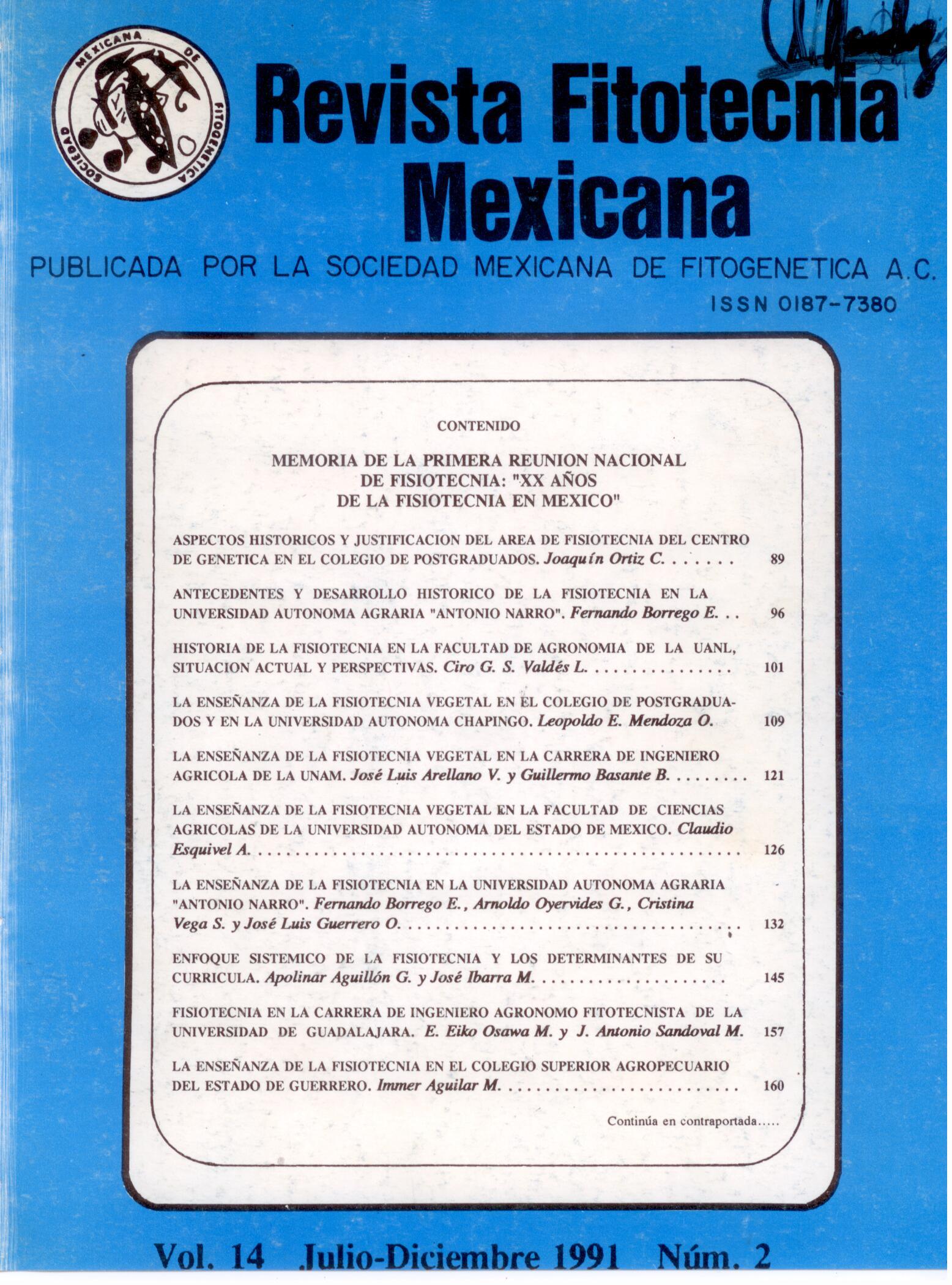RESEARCH IN CROPS WITH A PHYSIOTECHNICAL APPROACH IN THE FACULTY OF AGRONOMY OF THE UANL. SOME CONTRIBUTIONS AND PERSPECTIVES
Main Article Content
Abstract
The research work at the Faculty of Agronomy of the UANL (FAUANL) includes the contributions made directly by the professors and students, who since 1975 are directed by their teachers in the execution of their thesis work within projects with objectives defined. In 1976 these projects were made official in the then Agricultural Research Center (CIA) of the General Directorate of Scientific Research of the UANL. In 1981, this Center became part of the FAUANL, being called CIA-FAUANL, and the projects initially proposed as "permanent" were maintained as such, making the continuity of research in this faculty possible. In 1975, at the end of his Master's degree in Genetics at the CP, the first author of this work joined the FAUANL as a Master Researcher, being the first teacher with training in Physiotechnics, which allowed this conception to begin in teaching and research. in this institution. In the first work with this new orientation, the bean grain yield was interpreted based on its components; in the thesis carried out in 1975 by Roberto Nuñez R.(33), under the advice of the aforementioned author, which was presented at the VI National Congress of Plant Genetics focusing on genetic improvement. From 1975 to 1991, multiple works with a physiotechnical orientation have been carried out, almost all of them in the Maize, Bean and Sorghum Improvement Project (PMMFYS), advised by research professors involved in the project, most of whom are graduates of the Postgraduate College. In this essay the objectives are: 1) Quantify the work carried out since 1975 with express physiotechnical orientation, as well as those that, without having it, could be considered in the physiotechnical field; 2) Analyze the contributions of previous works in five areas of physiotechnical research in crops; 3) Conclude on the previous sections and, 4) Present some perspectives of physiotechnical research at FAUANL.

